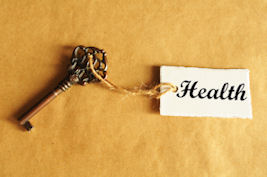 By Team ICG® Master Trainer Joan Kent
By Team ICG® Master Trainer Joan Kent
Fitness and health overlap but sometimes need to be considered separately. You can be fit but not healthy. How often have we seen that with pro athletes? You can also be healthy but not fit. We may see this with our students.
This post focuses on health because teaching our students is typically fitness-oriented. As instructors, we know our health matters, and that just staying fit may not address health issues that crop up as we work hard, feel stressed, get older.
Probably everyone agrees that what we eat affects our health. Nutrition approaches to health are varied. Some people focus on organic foods, some on raw foods, others on herbs, phytonutrients and colorful pigments. There are low-carb, macrobiotic, and Ayurvedic diets, as well as a lot more.
One key, but often overlooked, factor in staying healthy is prostaglandin production. Prostaglandins are short-lived, hormone-like chemicals that are produced by the body”™s cells and move from cell to cell, rather than through the bloodstream. They regulate all kinds of cellular activities.
Inflammation has become a hot topic in medicine. More and more research indicates that all disease begins with some kind of inflammation. As it turns out, inflammation is caused by a specific type of prostaglandin. And foods influence prostaglandin production.
There are three types of prostaglandins, made from different fatty acids.
Series 1 prostaglandins control factors that most people recognize as beneficial. They dilate blood vessels, reduce blood pressure, inhibit unnecessary blood clotting, decrease risk of autoimmune disease, improve T-cell function, improve insulin sensitivity, decrease pain, decrease inflammation, decrease the need for sleep, alleviate depression, and much, much more.
Series 1 prostaglandins are made from dietary fatty acids in the omega-6 category. These include black current seed, flaxseed, hemp seed, pumpkin seed, walnuts, borage oil, evening primrose oil, sesame oil, sunflower oil, and more.
Series 2 prostaglandins do basically the opposite of all of the Series 1 functions listed above (as well as the unlisted Series 1 functions). Series 2 prostaglandins promote pain and inflammation, making them a prime culprit in disease.
Series 2 prostaglandins are also made from omega-6 fatty acids. However, high levels of insulin secretion will cause a different enzyme to act on the omega-6 fats, resulting in production of Series 2, rather than Series 1. As mentioned in previous posts, foods that trigger high insulin include sugars, processed carbs (like white bread), saturated fats, alcohol, and others.
Series 3 prostaglandins reduce the negative effects of Series 2. They decrease inflammation and enhance immune function. Series 3 are made from omega-3 fatty acids, which we hear about often these days because of their anti-inflammatory benefits. That anti-inflammatory property is one that can reduce what is presently considered the cause of all disease.
Omega-3 fatty acids include dark green leafy vegetables, fish, black currant seed, flaxseed, hemp seed, walnuts and pumpkin seed.
The easiest way to “bottom line” this and get the benefits is to:
- Consume omega-3 fats. You”™ll note that many of them also contain omega-6s, so you”™ll get the precursors of both Series 1 and Series 3 prostaglandins.
- Avoid junky carbs and limit alcohol. Both trigger high levels of insulin, which lead to Series 2 production.
- Avoid all-carb meals or snacks whenever possible. Eating protein and healthful fats every time you eat can modify insulin secretion.
Reducing the insulin impact of your diet can reduce the incidence of Series 2 prostaglandin production. This in turn may decrease the incidence of both serious diseases and inconvenient ones, such as colds.
I hope this helps you stay healthy.
[plulz_social_like width="350" send="false" font="arial" action="like" layout="standard" faces="false" ]
- New Year’s Resolutions: A Sugar Addict’s Survival Guide - April 15, 2024
- Motivation vs. Enthusiasm - October 12, 2023
- Why Exercise Shouldn’t Be Just One Thing - November 9, 2022
